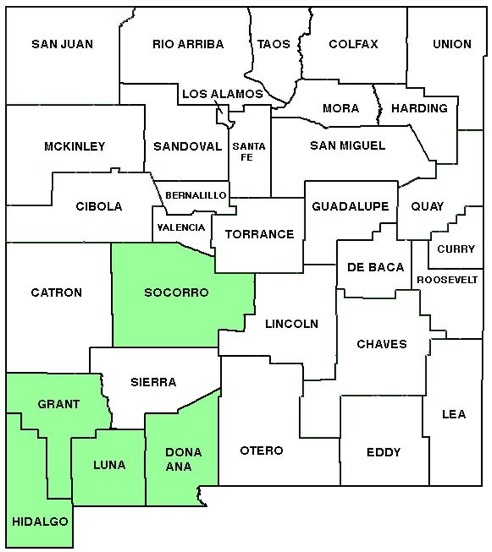WILDFLOWERS OF NEW MEXICO

Butterflies and bees love this 2-foot tall plant with numerous erect stems and dense, flat-topped clusters of thread-like, blue flowers. Note the leaves with deeply dissected lobes.
FLOWER: April–November. Each flower head has 35–70 tiny, thread-like, sky-blue, disk florets and no ray flowers.
LEAVES: Opposite. Blades oval to triangular in outline with a tapering base, 5/8–1 5/8-inches long (15–40 mm), deeply palmately dissected into 3 lobes with toothed segments with either pointed or blunt tips.
HABITAT: Sandy, rocky soil, depressions, ditches, streambeds; mesquite-creosote brushlands.
ELEVATION: 4,500–5,600 feet.
RANGE: AZ, NM, TX.
SIMILAR SPECIES: Only one species of Mistflower in NM. The dissected leaves and blue, thread-like flowers distinguish this species, formerly named Conoclinium greggii and Eupatorium greggii.
NM COUNTIES: Uncommon in southern NM: Dona Ana, Grant, Hidalgo, Luna, Socorro.
NOTES: Palmleaf Mistflower leaves and flowers produce an alkaloid toxin, intermedine, that poisons herbivores. Male Queen butterflies convert the compound into a pheromone that attracts females, then when mating pass a “nuptial gift” of the original toxin to the female, which makes the eggs unpalatable to predators.









PALMLEAF (GREGG’S) MISTFLOWER
CONOCLINIUM DISSECTUM (EUPATORIUM GREGGII)
Aster Family, Asteraceae
Perennial herb


















THE CONTENTS OF THIS WEBSITE ARE COPYRIGHTED AND CANNOT BE USED
WITHOUT PERMISSION OF GEORGE OXFORD MILLER


























Range Map for
Conoclinium dissectum








EMAIL ME







